Blood is called as river of life. Blood carries oxygen and nutrients to cells and eliminates carbon di oxide and waste products from the body. Daily production of RBC is equal to daily destruction of RBC. When there is imbalance between the production and destruction of RBC resulting condition will leads to anaemia. The word Anaemia derived from Greek anaimia meaning lack of blood. Anaemia is defined as decrease in RBC count, haemoglobin and or haematocrit values resulting in a lower ability for the blood to carry oxygen to body tissues or Reduction in the amount of haemoglobin per unit of blood and may or may not accompanied with the reduction in red blood cells. Reduction of quality and or number of red blood cells below normal is known as anaemia. According to Oxford dictionary Anaemia defined as a condition in which there is a deficiency of red cells or of haemoglobin in the blood resulting in pallor and weariness. Anaemia also defined as reduction in the oxygen carrying capacity of blood either result in decrease in red blood cells or amount of haemoglobin present per unit volume of blood. Anaemia functionally defined as decrease in oxygen carrying capacity of the blood. Anaemia is the most neglected and most serious problem in veterinary practice and leading to high morbidity and mortality causing high economical losses to both farmer and nation in terms of fall in production and mortality. All age group animals are equally susceptible for anaemia, pregnant and young animals are more prone to anaemia. Compared to young ones other animals’ piglets are more susceptible to iron deficiency anaemia. In anaemia there will be reduction in number of RBC and or fall in concentration of haemoglobin. Variation in shape of RBC known as poikilocytosis, variation in size of RBC known as anisicytosis. Treatment for anaemia is as important as treating for primary cause or disease, because for complete recovery of animal correction of anaemia is important.
Classification of anaemia based on RBC morphology
- Microcytic: Here size of RBC will be smaller seen in deficiency of nutritional agents like iron, copper.
- Normocytic: Here size of RBC will be normal seen in acute blood loss conditions.
- Macrocytic: Here size of RBC will be larger seen in Vitamin B-12 and Folic acid deficiency.
Classification of anaemia based on concentration of haemoglobin
- Normochromic: Here concentration of haemoglobin is normal seen in acute blood loss conditions.
- Hypochromic: Here concentration of haemoglobin is lesser than the normal.
Based on function of bone marrow anaemia is classified as 2 types
- Regenarative anaemia: In this type bone marrow is functional; there will be effective and adequate erythropoiesis. So production will be normal but destruction of RBC will be more. This is again divided into 2 types 1. Haemorrhagic anaemia 2. Haemolytic anaemia.
- Non-regenerative anaemia. In this type bone marrow is non-functional, so there will be ineffective erythropoiesis. So production will be reduced but destruction of RBC will be normal.
Other types of anaemia are as follows…
- Physiological anaemia: Common in pregnant animals due to increased demand from growing foetus inside the woumb and growing young ones of animals due to milk is poor source of iron. In both cases iron supplementation will resolve the problem.
- Aplastic anaemia: Due to bone marrow affections there will be insufficient production of RBC leads to aplasti anaemia. Bone marrow affections may be due to bacterial, viral, toxic substances, toxicity of medicines or may be due oncological etiology.
- Haemorrhagic anaemia: Anaemia due to loss of fresh blood due to major surgical corrections, trauma, automobile accidents. Here blood picture will be normocytic and normochromic.
- Haemolytic anaemia: Anaemia due to rapid destruction of RBC due to haemoprotozoan infections, Bacterial, Viral, Rickettsial etiology. Here number of reticulocytes will be raised in the blood. Here blood morphology will be microcytic and hypochromic.
- Anaemia due to renal pathology: Erythropoiesis is mainly dependent on reythropoietin hormone secreted from kidney. So due to renal affections there is impairment of secretion of erythropoietin leads to reduced erythropoiesis causing anaemia.
Causes for anaemia
- Pathology of bone marrow, liver and kidney.
- Chronic internal parasitic infestation including round worms. tape worms and flat worms.
- Severe external parasitic infestation including ticks, lice and fleas.
- Deficiency of nutritional agents like iron, copper, cobalt, folic acid, Niacin, intrinsic factor.
- Neoplasm of various internal organs.
- Bleeding or sudden blood loss due to trauma or injury occurs in accidents.
- Blood loss due to major surgery.
- Haemo-Protozoal infections like Babesiosis, Theileriosis and Anaplasmosis.
- Bacterial diseases like Leptospirosis, Bacillary haemoglobinuria, Heart water disease.
- Viral diseases like Equine infectious anaemia, Chicken infectious anaemia etc.
- Coccidia infestation in calves and Goats.
- Poisonings like onion poisoning, water intoxication, Chronic oxalate poisoning etc.
- Genetic disorders like auto immune haemolytic anaemia, Iso immune haemolytic anaemia.
Symptoms of anaemia in animals
Pale to paper white mucus membrane, dull, depressed, anorexia, lethargy, dyspnoea, sub normal temperature, hurried respiration, exercise intolerance, tachycardia, rough hair coat, jugular pulsation, geophagia and partial to complete anorexia. Pale to paper white buccal mucosa, retarded growth in calves, loss of draft power in bullocks and fall in milk yield, long standing anoestrus in female animals.
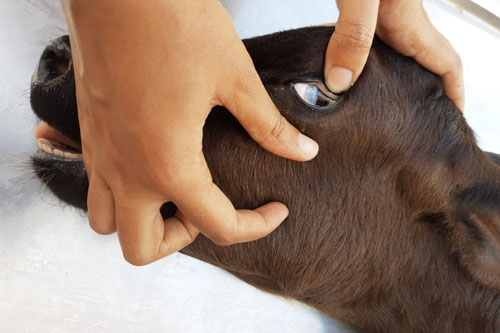
Diagnosis
- History of severe blood loss, recently underwent major surgery, chronic parasitic infestation, malnutrition, haemoprotozoal infections etc.
- Clinical examination showing pale mucus membrane, jugular pulsation, tachycardia and hurried respiration, dyspnoea, anorexia and exercise intolerance.
- Complete blood count examination by manual method or by using haemato analyzer.
Blood quantitative analysis
Normal Erythrocytes count 5-8 Million/mm3 … Erythrocytes count fall below 5 Million/mm3
Normal Haemoglobin level 9-12 g/dl…Haemoglobin level falling below 8 g/dl
Blood qualitative analysis
Estimation of MCV, MCH, MCHC. - Clinical examination of animal for external parasitic infestation, faecal examination for ova or oocyst of internal parasites and blood smear examination for haemo-protozoal infections.
- Coomb,s Test for the detection of auto immune haemolytic anaemia.
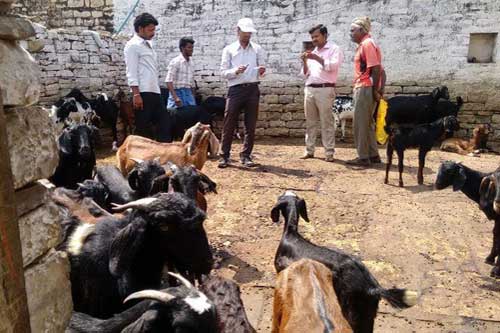
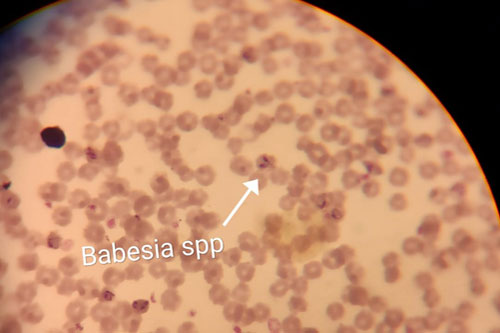
Treatment
Treat the animal for primary cause and treat the anaemia as a supportive therapy. First it should be treated for symptomatically based on cause anti infectious agents followed by anti-inflammatory, anti histamine, appetite stimulizers like B-Complex injections dosage should be given as per the body weight. Later animal should be treated for the anaemia based on RBC Count and Haemoglobin level.
- For severe anaemic cases having haemoglobin level falls below 5 g/dl needs blood transfusition: @ 2-3ml/kg BW to raise PCV by 1%. Selection of ideal donor, matching of blood, aseptic procedure and amount of blood to be transfused are important steps for successful transfusion.
- Ferrous sulphate
In cattle 8-15gms daily once for 14 days.
In Small Ruminants 0.5-2 gms daily for 14 days. - Copper sulphate
In cattle 1-2gm PO once daily for 7 days.
In Small Ruminants 0.25gms/45 kg BW daily for 14 days. - For non-regenerative anaemia
Erythropoietin 100 Units/kg BW SC 3 times per week. - Iron dextran complex (IMFERON) R @ 1ml for 50 kg BW IM route.
- Iron dextrin with Folic acid (FERRITAS) R @1ml for 50 kg BW IM route.
- Iron sorbital-citric acid (JECTOFER)R 1ml for 35kg BW IM route.
- Iron sucrose injection (Oroferol)R @ 1ml for 30kg BW IM route.
- 3D REDR Syrup dose as per veterinarian advice.
- Sharkoferol R Dosage as per veterinarian advice.
- HEAM UP R Dosage as per veterinarian advice.
- DEX ORANGER Dosage as per veterinarian advice.
- FerritasR Dosage as per veterinarian advice.
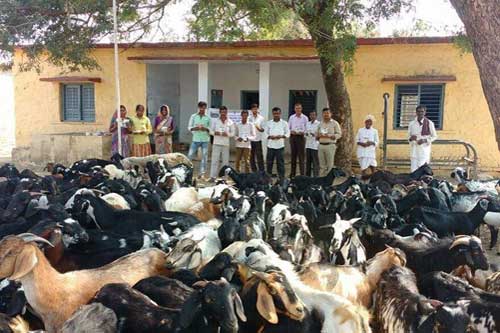
Control
- Isolation, early diagnosis and prompt treatment of sick animals.
- Regular deworming of animals as per the schedule.
- Regular treatment for external parasitic infestation.
- Clean and hygiene practices in the farm.
- Special care and observation to pregnant and young animals.
- Control of external parasites in the farm.
- Regular feeding of area specific mineral mixture to animals.
- Good management practices in the farm.

References
- MSD Veterinary Manual.
- Lecture notes on Deficiency and endocrine disorders in domestic animals. By Dr Vivek R Kasaralikar, Dr N A Patil Department of Veterinary Medicine Veterinary College Bidar Karnataka.
- Wikipedia
- Veterinary Pathology Ghanti A Sastry, Ramarao.
- Anaemia in Cattle Surveillance Vol 19 No 1 1992.
- Anemia David B church Proceedings of the Veterinary Nursing Association New zeland Annual Conference 2017.
- Outline of clinical diagnosis in cattle by A H Andrews.
|
The content of the articles are accurate and true to the best of the author’s knowledge. It is not meant to substitute for diagnosis, prognosis, treatment, prescription, or formal and individualized advice from a veterinary medical professional. Animals exhibiting signs and symptoms of distress should be seen by a veterinarian immediately. |



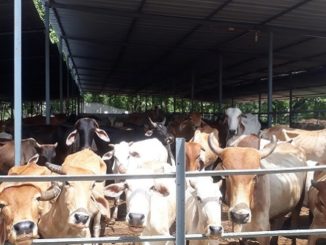
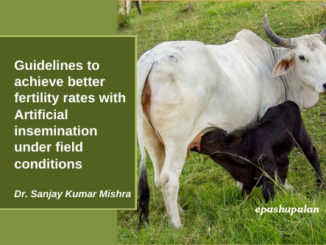


Excellant information